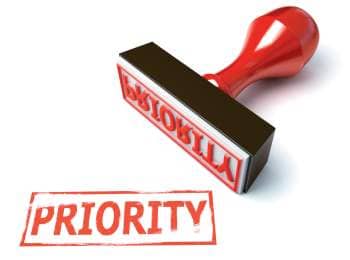What is the best method to establish a framework for selecting appropriate equipment safety levels? An expert explains the benefits of three strategies to reduce risk.
Setting the standards for risk management has been a job left to biomedical engineers for at least a decade, but questions persist in the industry over how best to establish a framework for selecting appropriate equipment-safety levels. The Joint Commission for the Accreditation of Healthcare Organizations (JCAHO) previously required an inventory of all medical equipment and maintenance at least twice yearly, but that changed in 1989.
“They opened it up to a risk-based inventory process, which has been in place with only minor changes since then,” says Matthew F. Baretich, PE, PhD, president of Baretich Engineering Inc in Fort Collins, Colo.
Specifically, the JCAHO Comprehensive Accreditation Manual for Hospitals states in the section on management of the environment of care (EC) that it is up to organizations to “establish and use risk criteria for identifying, evaluating, and creating an inventory of equipment to be included in the medical equipment management plan before the equipment is used. These criteria address equipment function, physical risks associated with use, and equipment incident history.”
The Joint Commission’s guidance also includes “maintenance strategies for all equipment on the inventory … (with) intervals for inspecting, testing, and maintaining appropriate equipment … based on criteria such as manufacturers’ recommendations, risk levels, and current organization experience.”
In 2004, JCAHO made a few changes to its standards and survey process in standard EC.6.10. Primarily, this added an emphasis on the scoring of life-support equipment. While past standards and scoring placed an emphasis on preventive maintenance completion rates, the current survey process does not emphasize the PM completion rate as a primary index. Instead, it places more emphasis on “equipment use” of the units by the clinical staff. Organizations also may choose to place greater emphasis on what they consider other critical equipment in their organization.
Outside of such broad guidelines, Baretich notes, it really comes down to a question of what equipment is put in a maintenance program and what equipment is left out.
“There have been various approaches to deciding this question over the years,” Baretich says. “In many cases, the idea was that companies could save money by not worrying about minor pieces of equipment and spending more time on important pieces instead. Even minor pieces can cause trouble, however, and not checking them regularly leaves us open to a problem. We have a trade-off: We save money, but we increase risk.
“Although the literature includes a lot of discussion about different approaches to implementing that risk-based option, no one has really tackled the question of when you stop cutting things out,” he continues. “What is the right balance of saving money? And what is an ‘acceptable’ risk level? How do we responsibly define what should get maintenance and what should not?”
Algorithms
One approach to reducing risk is to use algorithms, which was first proposed by Larry Fennigkoh in 1989.1 Fennigkoh described “equipment inclusion criteria” for compliance with JCAHO standards, which had recently been changed to allow flexibility in inventory and maintenance scheduling. For each type of medical device, Fennigkoh suggests that an equipment management (EM) number be calculated, and those devices with an EM greater than 12 would be included in the equipment management program. The EM number is the sum of the numbers assigned to the equipment’s critical function (a value from 2 to 10), physical risk associated with clinical application (a value from 1 to 5), and required maintenance (also a value from 1 to 5).
“His algorithm was simple, straightforward, and lots of people used it,” Baretich says. “In fact, many people still use it or use one of the many variations on it as people tinkered with it over the years.”
John T. Collins was one of those who modified the values, reserving a value of 10 in function for life-support equipment. In his estimation, risk should be based on reports from the US Food and Drug Administration’s Manufacturer and User Facility Device Experience (MAUDE) database, and required maintenance should be based on hours expended per year on “actual repairs involving replacement parts” for each type of medical device.
In Collin’s assessment, devices for which EMs greater than or equal to 8 should be included in the equipment management program. Devices for which the EMs equal 20 should be assigned a quarterly PM Schedule. For EMs of 14–19, the scheduled PMs should be semiannual; for 11–13, annual; and for 8–10 they should be performed every 18 months.2
Maintenance Sensitivity
Just taking an approach that will put high-risk devices into a program and will take low-risk devices off that program leaves out an important factor, however: Doing extra maintenance does not make some devices any safer.
| Three Approaches to Reducing Risk
Algorithms Monitored Maintenance Programs FMEA |
“We refer to that as ‘maintenance sensitivity,’ ” Baretich says. “If you can’t do any good by doing maintenance, then you shouldn’t bother doing it, even for a critical device.”
Malcolm Ridgway defines PM as “a composite of some or all of the following activities: scheduled maintenance, including cleaning and/or decontamination; performance verification, including calibration; and safety testing” using several definitions. Scheduled maintenance includes “the inspecting, cleaning, lubricating, adjusting, or replacing of a device’s nondurable parts;” performance verification refers to “testing or calibration conducted to verify that the device functions properly and meets performance specifications;” and safety testing means “testing conducted to verify that the device meets safety specifications.”3
Further, Ridgway proposes that medical devices included in a “monitored maintenance program” should be those that are “critical devices in the sense that they have a significant potential to cause injury if they do not function properly” and that are “maintenance sensitive in the sense that they have a significant potential to function improperly if they are not provided with an adequate level of PM.”
He also suggests a three-step procedure to evaluate each type of medical device for inclusion in the medical equipment management plan (MEMP). The first step asks if the equipment is a critical (high-risk) medical device. If no, the device is excluded. If yes, step 2 asks “What is the maintenance sensitivity of the device?” A series of questions is provided for scheduled maintenance, performance verification, and safety testing to produce a “maintenance sensitivity profile.” Finally, step 3 asks whether this device should be included in the facility’s MEMP. If the device is both critical and maintenance sensitive, it is included in the equipment management program.
Failure, Mode, Effect, Analysis
Still another approach to biomedical equipment risk assessment utilizes one of the most important tools for improving the performance of any system. Failure, mode, effect, analysis (FMEA) identifies the ways that a system can fail and prioritizes those potential failures, with high-priority failure modes being candidates for system improvement.
“The hottest topic now is to apply FMEA techniques to these questions in the biomedical industry,” Baretich says. “FMEA has a long history in the automotive industry. It is used in the airline industry and by NASA, and JCAHO is even looking at having hospitals use it to analyze clinical situations.
“For any system or process or machine or anything, the principle involves looking at different ways it could fail,” he continues. For each mode of failure, Baretich says, you look at the effect. For instance, if a failure happens, do you simply repair it and go on, or will it require further investigation because somebody got hurt or died because of it? You also have to look at the likelihood of that failure. On one end you can have failures that have major consequences and are fairly common, and on the other you have those that lead to few consequences and happen rarely.”
The priority of a failure mode is based on a combination of probability and severity. Failure modes with high probability and high severity have the highest priority. In other words, common failures that could produce substantial harm are the ones that most deserve attention. In that way, FMEA is a proactive technique that can be applied before a failure occurs.
Finding the Best Method
As JCAHO’s requirements stipulate, the choice of what equipment to assess—and how often to assess it for risk—is ultimately in the hands of each biomedical engineering department. There are several good models to follow for guidance, but, for each, Baretich cautions that it would be wise to consider dollar savings in light of attendant risk.
“As we continue to drop things off maintenance programs, we ought to be as smart as we can about what we drop off and what we keep,” Baretich says. “It’s crucial to identify the most important problems to work on and use that as the way to decide what gets maintenance and what does not.”
Liz Finch is a contributing writer for 24×7.
References
1. Fennigkoh L, Smith B. Clinical Equipment Management. Oakbrook, Ill: Joint Commission on the Accreditation of Healthcare Organizations. Plant, Technology & Safety Management Series. 1989:(2):3-12.
2. Collins JT, Dysko J. Risk assessment in a medical equipment management program. Available at: www.ahaonlinestore.com/ProductDisplay.asp?ProductID=554&cartID=1784260&PCatID=3. Accessed June 22, 2004.
3. Ridgway M. Classifying medical devices according to their maintenance sensitivity: a practical, risk-based approach to PM program management. Biomed Instrum Technology. 2001:35(3):167-176.




